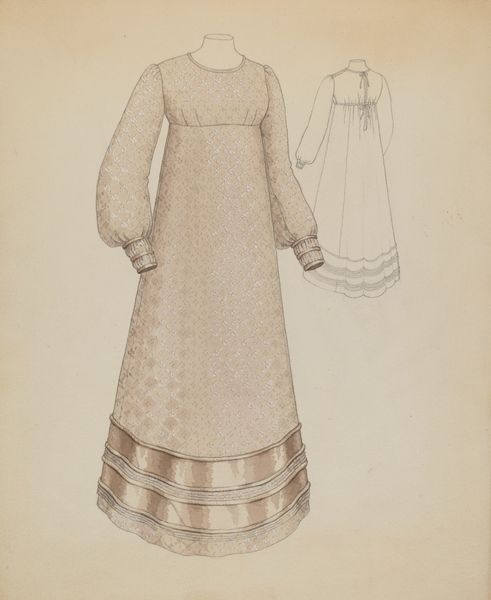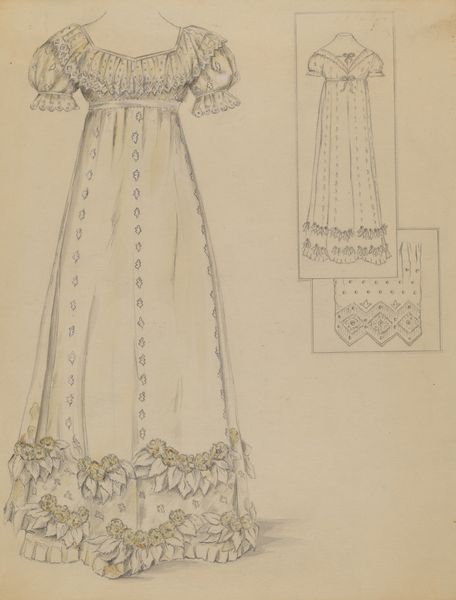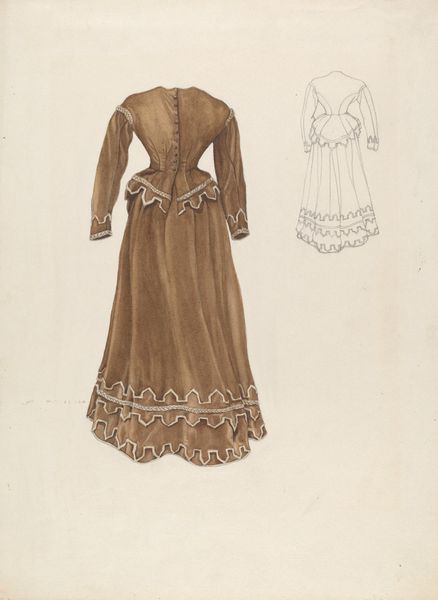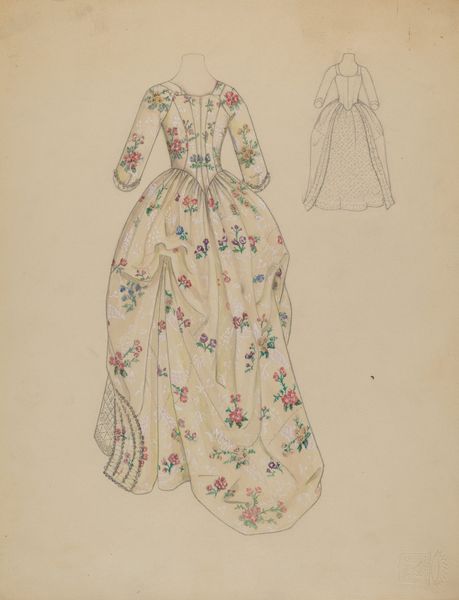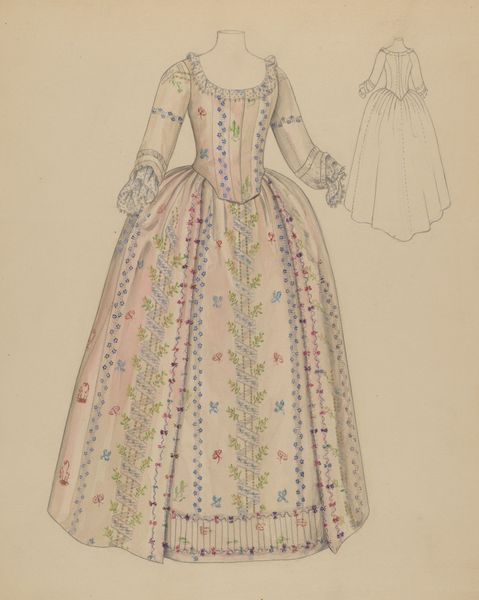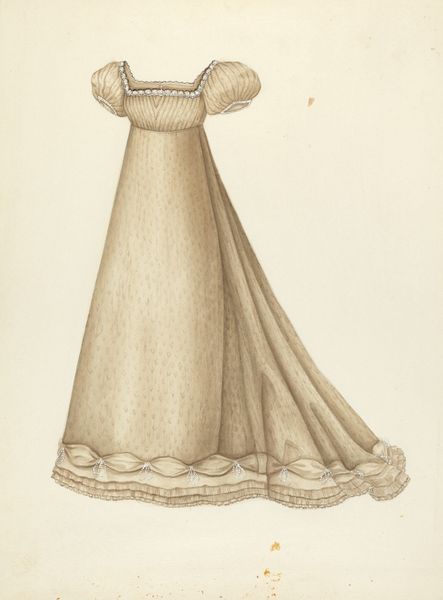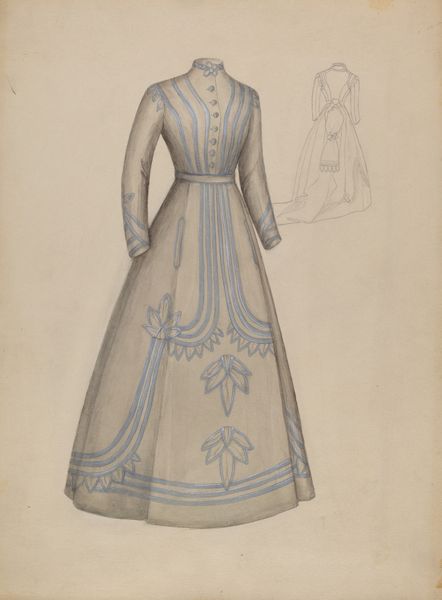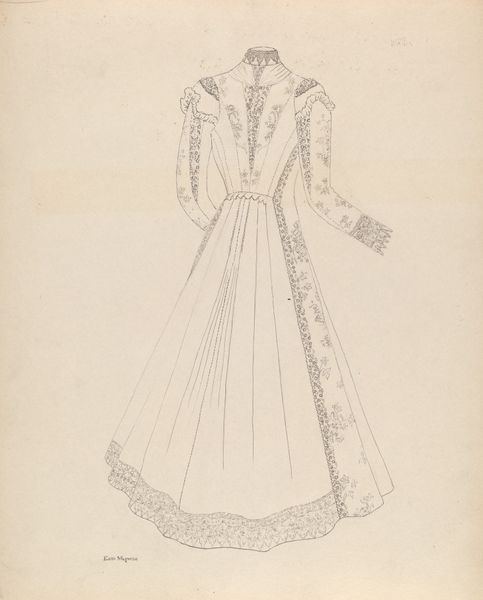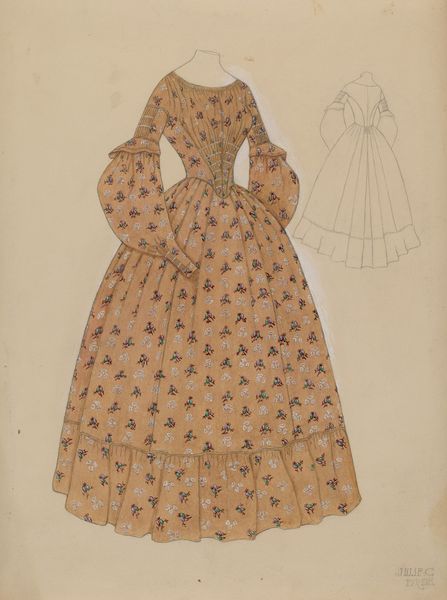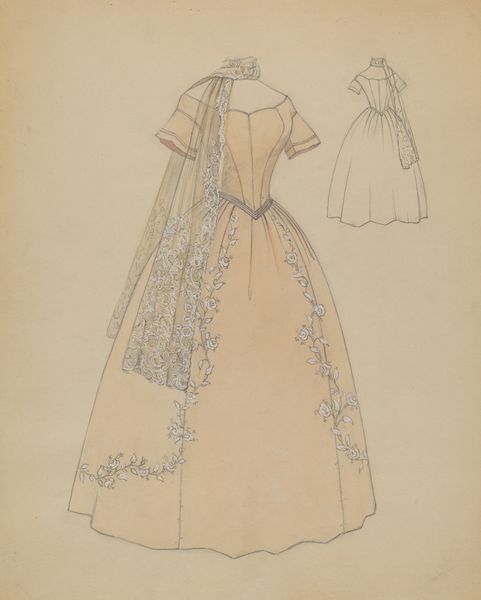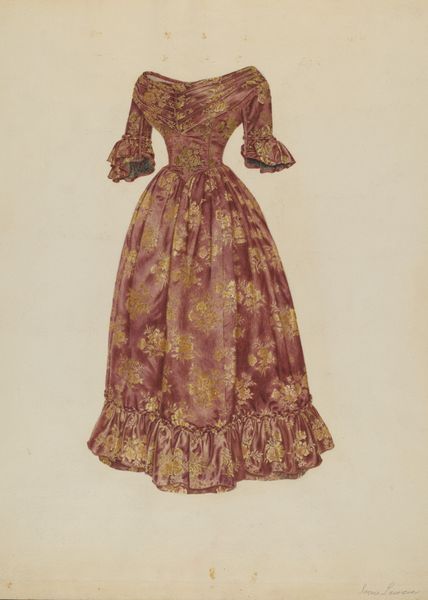
drawing, tempera
#
fashion design
#
drawing
#
underwear fashion design
#
tempera
#
fashion mockup
#
fashion and textile design
#
historical fashion
#
traditional dress
#
fashion sketch
#
costume design
#
ethnic design
#
clothing design
Dimensions: overall: 27.9 x 22.8 cm (11 x 9 in.)
Copyright: National Gallery of Art: CC0 1.0
Curator: Jessie M. Benge created this costume design circa 1936, using tempera and drawing to depict a dress. What are your initial thoughts? Editor: It’s rather lovely. There's a sense of lightness and an understated elegance. The color palette is muted but still conveys a rich, textural depth, especially with the vertical lines. Curator: Right, let's consider Benge's position as a designer and maker of this dress. The texture comes from a series of vertical lines, almost suggesting the warp and weft of woven textile, an anticipation of the material that’s meant to take physical shape, maybe silk or muslin? It’s more than just a visual representation. It hints at labor, the hands involved in both design and the potential construction of the garment. Editor: I see what you mean. Looking at how the light plays across the sketched dress suggests a mastery of form and color theory—the soft tempera, skillfully applied, articulates volume. But it's the relationship between line, color, and surface that is truly impressive, turning a simple sketch into a complex interplay of visual elements. The materiality almost becomes secondary to the pure aesthetics, the harmonious composition. Curator: Well, for me, that potential materiality of muslin or silk really grounds the piece. Its social context in 1930s America is crucial here—mass production, evolving fashion trends. It would be important to investigate what social class would potentially wear such a dress, or for what occasion? It also encourages us to investigate questions of authorship: who decides how people are clothed? Is that empowering or restricting, or both? Editor: I grant you, it exists within a social milieu and probably conveys subtle class differences. But still, to fully appreciate the sketch is to examine how skillfully Benge manipulated the medium. The formal harmony gives the piece a subtle but satisfying equilibrium. Curator: For sure, but these costume designs become social documents and that pushes us to consider its relation to history. Thanks to this sketch, the production of a piece of clothing offers such rich perspectives for viewing questions of history and power, not to mention artistry. Editor: Precisely. And it is through this nuanced lens, we see that "Dress" succeeds both as art and historical commentary.
Comments
No comments
Be the first to comment and join the conversation on the ultimate creative platform.
